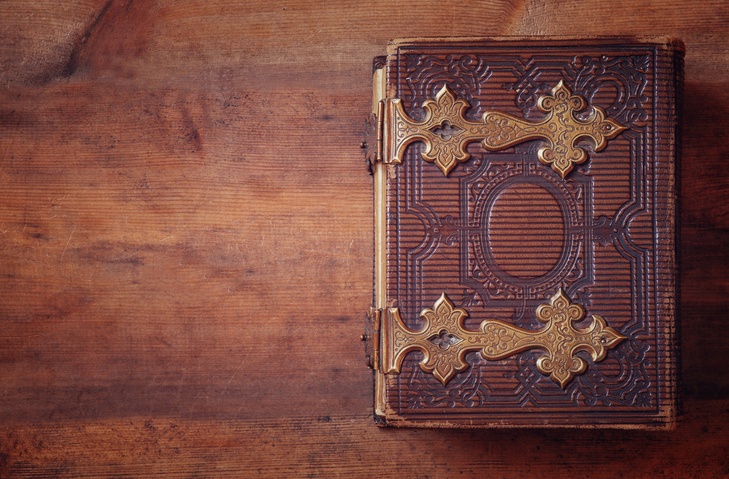
Many houses of worship contain valuable art, artifacts and other treasures. While these items often are imbued with deep spiritual meaning, the untrained eye might not recognize them as assets requiring protection. That creates risk — not just from the threat of human wrongdoing, but from Mother Nature as well. Art and artifacts are always vulnerable to the elements, and in a time when much of the U.S. is facing a heightened threat of natural disasters, that vulnerability is even more acute.
Proactively identifying and securing your church’s assets can mitigate your financial risk — and help ensure they remain part of the fabric of your church community, now and in the future.
 Leiza McKenna, fine arts consultant at Church Mutual Insurance Company, S.I. (a stock insurer)1, answers three foundational questions about the steps church leaders can take to protect art and artifacts during seasons of extreme weather and beyond.
Leiza McKenna, fine arts consultant at Church Mutual Insurance Company, S.I. (a stock insurer)1, answers three foundational questions about the steps church leaders can take to protect art and artifacts during seasons of extreme weather and beyond.
1. How do we decide what counts as art and artifacts?
Items like stained glass, golden vessels, paintings and tapestries tend to stand out more in people’s minds, but priceless artifacts don’t always glisten! Manuscripts, old books and, of course, Bibles are often valuable assets. With that in mind, the first thing you need to do is take inventory of all the assets your church owns. Create a file that includes a list of all fine art and valuable items, as well as a photograph, a brief description and a current retail replacement value for each item. If you need help, an appraiser can assist you with evaluating your assets.
2. What are some of the primary risks to consider?
Three major factors you need to consider are weather, storage and theft.
Weather
The impact of weather on your fine art and artifacts can vary widely depending on where your facility is located. There are three vital factors to control.
- Temperature: A stable, cool temperature is best for most art. Try to keep temperatures between 65-75 F.
- Light: Avoid spotlight illumination and direct sunlight when displaying your valuables; the ultraviolet (UV) light is harmful to all works on paper, as well as some metals and fabrics. Consider UV filtering glass for framing.
- Humidity: In general, art should be maintained in humidity of 40-50%. This can be challenging, especially in larger or older facilities, but the main goal is to keep the humidity constant, and not allow it to fluctuate.
Storage
If you need to store your valuables for any reason, there are measures you can take to provide as much protection as possible. When storing on-site, the ideal location is an isolated, interior room with minimal foot traffic, which limits exposure, sunlight and drastic temperature changes. You should avoid using basements or attics for storage unless they are insulated and climate controlled. For off-site storage, choose a facility that is not in a high-risk area for flooding, theft, earthquake or wildfire.
In any storage location, paintings and sculptures should be kept off the floor. Elevate larger pieces using racks or risers and keep smaller items in drawers or on shelves when possible. Check regularly for evidence of pests and leave traps on the ground at the first signs of infestation. If you detect a hint of mold or mildew, immediately reduce the humidity level and bring in an expert to eliminate the problem.
Theft
A quality security system protects your entire facility – including your fine art and artifacts – and can reduce the risk of financial loss due to theft. Consider including:
- Video cameras to monitor your facility’s entry points and inside areas where the most valuable items are displayed or stored.
- Burglar alarms to provide around-the-clock protection and remote monitoring.
- Motion sensors to alert you to potential unwanted activity.
3. Will our church’s property insurance cover our fine art and artifacts?
Ensuring your valuables are properly insured is vital, and standard property insurance policies may not cover your fine art and artifacts. Consult your insurer for guidance on what is covered under your current policy. While each insurance carrier’s offerings may differ, Church Mutual has several policies that mention coverage and limitation related to fine arts — and we are committed to finding solutions specifically designed to protect these items in the event of a loss.
No matter the carrier, securing the appropriate insurance coverage will require an accurate assessed value for the art, which can be accomplished through proper insurance appraisals, current purchase invoices and/or an agreed value between the client and insurer.
Evaluating and securing your church’s art and artifacts might feel daunting at first. By planning ahead and taking protective measures, you can mitigate your financial risk and preserve your treasures for years to come.
Views expressed in this article are solely those of the author and organization represented.



May also have interest in our article in FBI LE Bulletin 12/2016; Theft: A Real Threat to Religious Heritage.